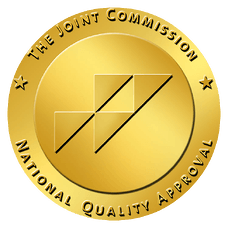Fentanyl Addiction Treatment and Rehab
Fentanyl: A Highly Potent Synthetic Opioid
Fentanyl is a synthetic opioid celebrated for its remarkable potency—approximately 50 to 100 times stronger than morphine. Often used in medical settings after major surgeries or treatments, this prescription drug may also find application in a range of other situations. Regrettably, it is occasionally manufactured illegally, presenting substantial dangers to individuals who choose to use it.
Prescription fentanyl is also known as:
- Sublimaze
- Duragesic
- Actiq
Street names for fentanyl include:
- Dance Fever
- Goodfellas
- Murder 8
- Tango & Cash
- Jackpot
- Friend
- Apache
Complete the pre-screen form below to initiate the admission process. Our admissions team will contact you shortly.

What Makes Fentanyl So Dangerous?
Fentanyl poses a particular danger due to its remarkable potency in comparison to other opioids. As a synthetic opioid, it is estimated to be 50 to 100 times stronger than morphine, a natural opioid sourced from the opium poppy. This considerable strength implies that even a minute quantity of fentanyl can exert powerful effects on the body. Given its potency, fentanyl requires meticulous controls and should be administered with utmost care, as the margin for error is exceedingly slim. It is all too easy to unintentionally administer a dose that results in an overdose, underscoring the critical need for awareness and caution when dealing with this substance. Indeed, in 2017, fentanyl was involved in more than 50% of opioid-related fatalities in the United States.
How Do People Use Fentanyl?
Prescription fentanyl can be given through injections, lozenges, or patches. Lozenges are sucked like cough drops, releasing medication gradually. Patches permeate the skin slowly for prolonged effects, while injections provide rapid delivery, typically administered by anesthesiologists.
Illicit fentanyl appears as eye drops, nasal sprays, pills, powders, or on blotter paper. It’s often mixed with substances like heroin, cocaine, MDMA, or methamphetamine to enhance effects, but its extreme potency raises overdose risks, as even a small excess can have dangerous results.
What Are the Symptoms of Fentanyl Abuse?
The use of fentanyl can lead to a variety of symptoms. Some of the side effects associated with fentanyl include:
- Intense short-term highs
- Euphoria
- Nausea
- Fainting
- Seizures
- Fatalities
- Slowed breathing
- Lowered blood pressure
- Constricted pupils
- Sedation
- Vomiting
- Urinary retention
The effects of fentanyl can vary based on the dosage taken, potentially leading to sedation, decreased blood pressure, slowed respiration, or seizures, which may ultimately result in coma or even death.
Is Fentanyl Dangerous?
Fentanyl poses a significant overdose risk. An overdose occurs when someone takes more fentanyl than their body can manage, leading to hypoxia, where the brain lacks sufficient oxygen. If untreated, this can be fatal.
What Are the Methods of Fentanyl Abuse?
When misused, fentanyl is often injected, snorted, taken as a pill, or used on blotter paper. People with prescription fentanyl gel patches may misuse them by extracting the gel for ingestion or injection. The DEA has noted cases where patches are cut into pieces and placed in the cheek or under the tongue. Illegally manufactured fentanyl can also be mixed with drugs like heroin, cocaine, MDMA, or methamphetamine, significantly increasing the risk of serious side effects and overdoses.
Identifying Signs of a Fentanyl Overdose: What to Look For
A fentanyl overdose presents several clear symptoms. Among the most prevalent signs of an overdose are:
- Unconsciousness.
- Alterations in pupil size
- Respiratory failure
- Cyanosis
- Cold, clammy skin
- Coma
Respiratory depression, coma, and constricted pupils indicate opioid poisoning. If you notice these signs, seek emergency help immediately, as failure to respond can result in severe harm or death.
What Are the Treatments for a Fentanyl Overdose?
A fentanyl overdose can be quickly treated with Naloxone, an opioid antagonist that reverses the effects of opioids. Known as NARCAN, it is available to EMS, law enforcement, pharmacists, and other qualified professionals. Many patients prescribed opioids are also given NARCAN for easy access in case of an overdose.
What Symptoms Indicate Fentanyl Withdrawal?
Like other opioids, fentanyl has its own specific withdrawal symptoms that you should be informed about. Some potential withdrawal symptoms include:
- Muscle aches
- Restlessness
- Lacrimation
- Anxiety
- Frequent yawning
- Difficulty sleeping
- Runny nose
- Excessive sweating
- Goosebumps on the skin
- Rapid heart rate
- High blood pressure
- Dilated pupils
- Nausea
- Vomiting
- Abdominal cramping.
How Long Does Fentanyl Withdrawal Last?
Withdrawal symptoms are typically brief, with most improving within 72 hours and significantly reducing in a week.
How Are Symptoms of Fentanyl Withdrawal Treated?
Fentanyl withdrawal symptoms can be very distressing and potentially risky. This highlights the need for patients to seek medical care in a controlled setting, which often yields better outcomes than quitting abruptly or self-reducing dosage. During detox, it's important to acknowledge the varying levels of withdrawal, from mild to severe, and the potential for complications.
Mild Withdrawal
Mild withdrawal from fentanyl may be uncomfortable, but it is usually not life-threatening. This condition can often be managed effectively with over-the-counter medications like ibuprofen or acetaminophen. Additionally, maintaining proper hydration and allowing for adequate rest can prove helpful. Medications such as hydroxyzine and loperamide can also aid in relieving symptoms of nausea or diarrhea.
Intense Withdrawal
In cases where patients exhibit more severe symptoms, hospitalization may be necessary during the withdrawal and detox process. Severe symptoms might necessitate the use of clonidine, which has been shown to reduce withdrawal symptoms by approximately 50 to 75% in patients. Additional medications for managing withdrawal include Suboxone, a combination of naloxone and buprenorphine, and methadone, which serves as a long-term opioid maintenance therapy. Each of these options can effectively alleviate withdrawal symptoms, diminish their intensity, and shorten the duration of detoxification. Although methadone is categorized as an opioid, it is designed for long-term maintenance. Despite its potency, its regulated use generally renders it safer than other stronger or more dangerous opioids.
Complications of Fentanyl Withdrawal
Opioid withdrawal is generally not life-threatening, but it can be exceedingly uncomfortable. For patients experiencing complications, some of the most prevalent issues include:
- Intense nausea
- Muscle cramping
- Diarrhea
- Vomiting
Given these symptoms, careful observation is crucial. Nausea and vomiting risk aspiration pneumonia if inhaled. Diarrhea can cause electrolyte imbalance, leading to circulatory issues, heart attacks, or respiratory problems.
Severe muscle cramps can cause intense pain and joint discomfort. Luckily, detoxification programs offer various solutions to alleviate these symptoms.
What Can You Expect from The Loft Recovery During an Outpatient Rehab Program?
When confronting fentanyl addiction, seeking help at a detox and rehab facility aims to ensure a safe detoxification process, often involving medication and monitoring to ease withdrawal symptoms like electrolyte imbalances.
Detox starts within six hours of the last dose, with symptoms potentially lasting up to 10 days and peaking around 72 hours. These symptoms come in waves but eventually lessen.
At The Loft Recovery, we focus on a seamless transition to rehabilitation. After overcoming withdrawal, patients enter our intensive outpatient program that addresses both psychological and physical aspects of addiction.
Our dual-diagnosis treatment recognizes and addresses co-occurring mental health issues alongside substance use. We employ various therapeutic methods, including behavioral therapy to help patients understand and change thoughts linked to substance use. Group sessions foster community, while private counseling offers personalized support.
While some may skip rehabilitation, this choice increases relapse risk. Studies show that without rehabilitation support, the chances of returning to substance use rise significantly. We advocate for completing both detoxification and rehabilitation to enhance




